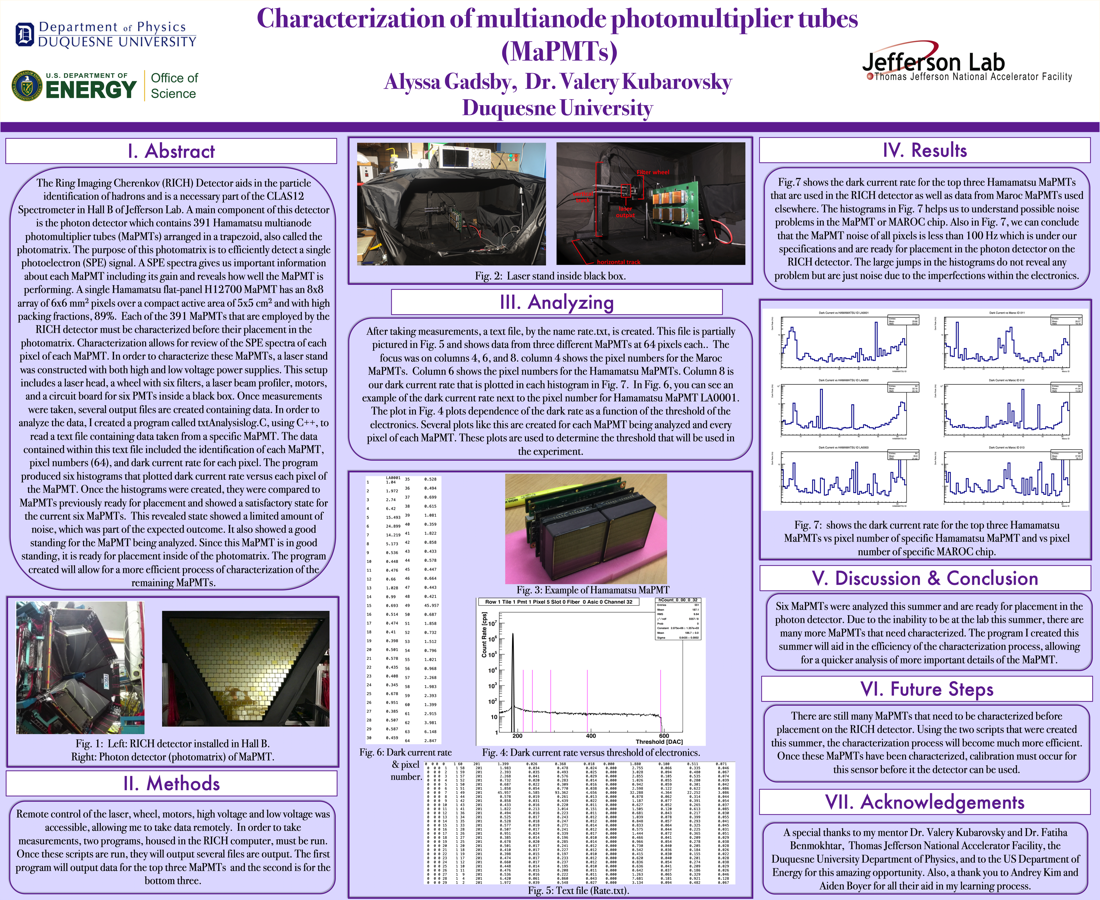Undergraduate Research at Jefferson Lab
Characterization of Multianode Photomultiplier Tubes
Student: Alyssa Gadsby
School: Duquesne University
Mentored By: Valery Kubarovsky
The Ring Imaging Cherenkov (RICH) Detector aids in the particle identification of hadrons and is a necessary part of the CLAS12 Spectrometer in Hall B of Jefferson Lab. A main component of this detector is the photon detector which contains 391 Hamamatsu multianode photomultiplier tubes (MaPMTs) arranged in a trapezoid, also called the photomatrix. The purpose of this photomatrix is to efficiently detect a single photoelectron (SPE) signal which gives us important information about each MaPMT including its gain and also reveals how well the MaPMT is performing. Each of the 391 MaPMTs that are employed by the RICH detector must be characterized before their placement in the photomatrix. Characterization allows for review of the SPE spectra of each pixel of each MaPMT. In order to characterize these MaPMTs, a laser stand was constructed with both high and low voltage power supplies. This setup includes a laser head, a wheel with six filters, a laser beam profiler, motors, and a circuit board for six PMTs inside a black box. Once measurements were taken, several output files are created containing data. In order to analyze the data, I created a program called txtAnalysislog.C, using C++, to read a text file containing data taken from a specific MaPMT. The data contained within this text file included the identification of each MaPMT, pixel numbers (64), and dark current rate for each pixel. The program produced six histograms that plotted dark current rate versus each pixel of the MaPMT. Once the histograms were created, they were compared to MaPMTs previously ready for placement and showed a satisfactory state for the current six MaPMTs. This revealed state showed a limited amount of noise, which was part of the expected outcome. It also showed a good standing for the MaPMT being analyzed. Since this MaPMT is in good standing, it is ready for placement inside of the photomatrix. The program created will allow for a more efficient process of characterization of the remaining MaPMTs.
[Watch the presentation on YouTube]

Citation and linking information
For questions about this page, please contact Education Web Administrator.
